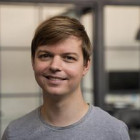Presentation Panel
Hybrid is Here to Stay: Get your Case Together and Set Up a Hybrid Teaching Environment!
Date Thursday, Nov 24 Time – Room: Potsdam I
When things turned back to normal and we could get back to campus, the tremendous potential of the virtual teaching format was not forgotten overnight. Over the past year, hybrid virtual classrooms have flourished, often essential to secure a sustainable student base for the future of universities. Such a parallel teaching scenario, where students and teachers share the same time window but only partially the same location, is however a big challenge in terms of technical implementation, but also in terms of skills required by teachers. Our speakers have been there and done it, so come learn from their experiences!

Herwig Rehatschek
Director Executive Department Teaching with Media, Medical University of Graz, Austria
Dr. Herwig Rehatschek studied Computer Science and Electronics and received his M.Sc. and his Ph.D. from the University of Technology, Graz. From 1997 until 2008 he worked at the non-profit research company JOANNEUM RESEARCH. His main emphasis was on eLearning and digital media analysis. He participated in many international EC projects and also managed and co-ordinated some of them. In 1999 Dr. Rehatschek won the Austrian state price in the category learning, knowledge and culture. In 2008 he joined the Medical University of Graz with the main responsibility for the development of the eLearning platform of the university. Since then he was actively involved in the set-up and implementation of the LMS, the development of eLectures, the introduction of a new virtual microscope and the design of a teacher training course (eDidactics – http://www.edidactics.at). He won in 2012 the Dr. Michael Hasiba price for innovative teaching and in 2017 the Austrian state price „Ars Docendi“ for innovative teaching in the category “innovative teaching models having a huge number of students” by implementing a non-linear-story telling concept within first aid and emergency medicine. In 2017 he started a pilot trial with a new lecture recording system. Until begin of 2018 one hundred recordings were online and available to all students of the university. In 2019 a new software platform for the lecture recording system was introduced which also offered a video portal functionality. In 2020 subtitles were added. In 2021 the system was extended by livestreaming including a chat backchannel. By begin of 2023 more than 1600 recordings were available. In 2022 he started with the project "Virtual Anatomy", which combines classical anatomy teaching with 3D representations of anatomical structures. The project is a cross collaboration between two universities in Austria.
Links

Daniel Cirone Nørregaard
Consultant in Learning Technologies, UCL University College, Denmark
Daniel Cirone Nørregaard is a consultant in learning technologies with the Projects and Development sub department at UCL University College in Odense, Denmark. While the Department for Digitalization and IT is his current base of operations, Daniel brings a unique perspective to the table thanks to his master’s degree in English and French as well as 9 years of experience teaching Danish as a second language to immigrants and refugees.
Apart from developing the use of parallel teaching, Daniel is a system administrator of the LMS at UCL and responsible for managing their Zoom, Google and video hosting solutions.
Links
Moderator

Wilfred Rubens
Consultant, Edublogger and Editor at e-learning.nl, WilfredRubens.com/e-learning.nl, Netherlands
Wilfred Rubens (1964) currently works as an independent consultant on technology enhanced learning. Wilfred works as a project leader on the selection and implementation of learning technologies. He provides advice about curriculum development, pedagogy and the use of technology for learning. Wilfred delivers keynotes and presentations, and he facilitates workshops and classes about technology enhanced learning. Wilfred has been professionally involved in e-learning for almost 30 years. For more than 18 years he blogs about ICT and learning. He published a book about elearning trends and developments (in Dutch), and he is co-author of a book about social learning. Wilfred is also one of the editors of the Dutch portal e-learning.nl, member of the advisory board of the anual Dutch Next Learning conference and member of the advisory board of OEB Global.
Links
Practical Experiences from Implementing a Hybrid Teaching Scenario for Large Student Groups, Herwig Rehatschek
In this presentation you will get an overview on the advantages and disadvantages of the hybrid scenario, helping decision makers and teachers at other universities select the most appropriate implementation for their own institutions.
During the COVID pandemic many universities could not use their full lecture room capacity and were forced to switch either to a virtual synchronous format (students and teacher share the same time window but not the same location) or to set up at least a hybrid scenario (students and teachers share the same time window but only partially the same location).
There are various ways for setting up virtual synchronous formats, by either setting up the infrastructure yourself or by licensing one of the many existing video conferencing systems. Setting up a hybrid scenario yourself, in which some of the students reside in the classroom and some of the students reside at home, is however a big challenge not only in terms of technical implementation, but also in terms of skills required by the teachers.
But a hybrid scenario also has many advantages. Advantages include flexibility for the students by giving them location independency. They can decide if they want to participate in the classroom or from home. The number of students attending lectures can be increased, students may still have direct contact to teachers and last but not least it gives universities the opportunity to increase its overall student numbers, without having to build additional larger and expensive lecture halls.
This session offers a valuable basis to develop your own best fitting scenarios. We will first state the challenges in setting-up hybrid teaching scenario for teaching large groups of students. We will then describe the technical workflow, and the most important steps for the set-up of a live streaming solution based on open-source software. We will give the key parameters that need to be defined before setting up a streaming solution, to avoid misconception and expensive add-ons. Finally, we will state the challenges teachers have to master in hybrid scenarios.
Overview
- Tips on how to select appropriate software and the requirements to be considered.
- Accompanying measures to be defined such as announcements to teachers and students, teacher training and technical support.
- Golden rules for hybrid teaching, evaluation results and lessons learned.
Getting Comfortable between Two Chairs: How to Manage Parallel Teaching, Daniel Cirone Nørregaard
In this presentation, we will focus on the following questions: What are the technical criteria for getting started with parallel teaching? As a professor, which steps can you take to improve the parallel teaching experience for you and your students? When is parallel teaching not the right choice?
Parallel teaching has always struggled with the fact that it is neither onsite nor online but both. It is a unique and not yet common hybrid learning space, and experience tells us that students do not know what to expect and professors are not sure where to start or, quite frankly, in which direction to look.
Recent political changes in Denmark calling for decentralisation of the educational sector have made leadership at UCL University College realise that, although it is a difficult discipline to master, parallel teaching and similar hybrid formats are essential to securing a sustainable student base in the future and being able to continue to offer the same wide variety of education that we do today.
Overview
- See parallel teaching for what it is and what it is not.
- Manage and avoid possible pitfalls.
- Engage students in co-creating the best possible learning environment.